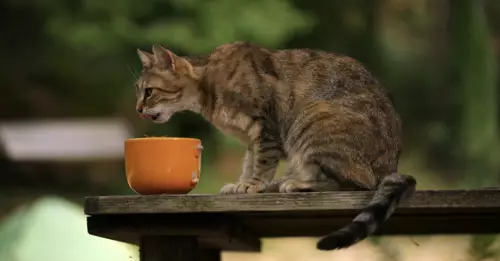Caring for our feline friends entails much more than simply providing food; it also involves understanding how best to nourish them. While dogs thrive on routine, cats have a different set of nutritional requirements and may not need a strict feeding schedule. Nevertheless, having a feeding plan tailored to your cat’s unique needs is crucial for maintaining their health. Partnering with companies like Nom Nom can provide insights into optimizing your cat’s diet, helping you create a balanced approach to feeding.
Caring for a cat requires attention not only to the type of food offered but also to how and when it is served. Whether you choose to free-feed (leaving food out for your cat to graze) or rely on more structured meal times, it’s essential to ensure that the chosen method meets your cat’s daily caloric and nutritional needs. Factors such as age, health status, and activity level all play a critical role in determining how much food is appropriate for your pet.
Cats share a long-standing relationship with humans, tracing their domestication back roughly 6,000 years. Despite this tie, their hunting instincts remain remarkably intact. Unlike their canine counterparts, whose ancient pack-hunting behaviors have greatly influenced their feeding habits, cats tend to rely on solitary instincts as hunters. In the wild, they typically consume 8 to 12 small meals throughout the day, a pattern that closely mirrors their natural feeding behavior.
Interestingly, feral cats, often perceived as unhealthy because of their lean appearance, actually demonstrate a healthy weight and body composition due to their efficient hunting capabilities. This instinctual behavior is a significant factor to consider when determining how to feed your cat—a domesticated cat may benefit from a feeding routine that reflects these natural habits.
The feeding regimen for cats must evolve as they transition through various life stages. Young kittens, for example, demand higher caloric intake relative to their body weight than adult cats. Consequently, serving multiple smaller meals throughout the day may prove beneficial. As they mature into adulthood, their needs adjust once again. Adults can tolerate less frequent feedings, provided the total caloric needs are fulfilled over the course of each day.
However, as they enter their senior years (around 7 years old), cats frequently require more structured feeding schedules. Consistency plays a vital role in senior cats, particularly because they may have underlying health issues that exacerbate their dietary needs. Observing changes in feeding behavior, such as persistent begging, may indicate health concerns such as hyperthyroidism or diabetes, prompting the need for a veterinarian’s assessment.
Obesity has emerged as one of the most prevalent health issues among domestic cats today, surpassing the number of felines at a healthy weight. While a charmingly beggish cat may tug at your heartstrings, it’s crucial to remain vigilant about your cat’s weight. If you find that your cat is overweight, this reality necessitates a careful review of their food intake and exercise routines.
Research has indicated that scheduled feeding can foster healthier weight management compared to free feeding, as it allows for better portion control. Carefully monitoring the amount of food provided, while factoring in daily caloric requirements—including treats—can help maintain your cat’s ideal weight.
When selecting food for your cat, consider that different types, such as raw or wet food, have varying shelf lives. For instance, moist foods tend to spoil quickly, making them less suitable choices for free feeding. Always adhere to safe food handling practices, ensuring moist food is not left out for too long, and consider storing it in the refrigerator to prolong freshness.
Conversely, dry food tends to be less appealing to cats, potentially curbing overconsumption. Therefore, your selection should prioritize your feline’s preferences while maintaining a focus on health.
Managing your cat’s diet in a multi-person household can present challenges. Clear communication about feeding practices is essential to avoid overfeeding, a common pitfall. Keeping track of each feeding and sticking to a consistent schedule are pivotal in assuring that your cat receives the proper nutrients without risk of excess weight gain.
You may also need to coordinate feeding around your own daily schedule, adjusting mealtimes as necessary. Even if your feline’s natural instinct leans towards grazing, they can adapt well to fixed meal times if those slots appropriately meet their dietary needs.
Ultimately, the goal of feeding your cat revolves around their well-being. Engage with your veterinarian if you’re contemplating changing your feeding routine or if you have concerns about your cat’s dietary habits. By understanding their needs and working with knowledgeable partners such as Nom Nom, you can ensure that your furry friend receives the best nutrition for a happy, healthy life.

